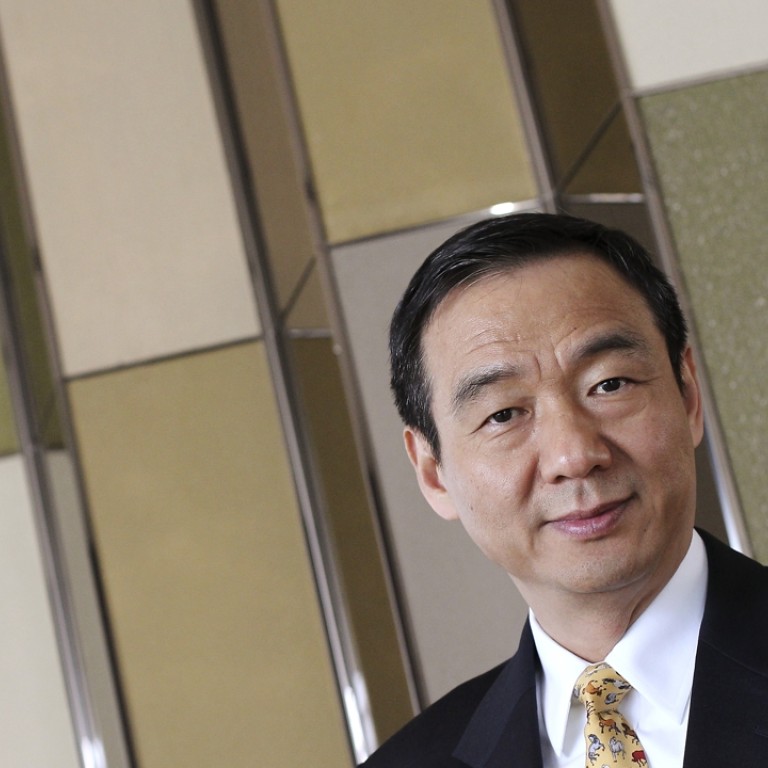
New | AAG Energy to offset Beijing gas price cuts by boosting output and efficiency
Impending cuts in China’s natural gas pricing will likely squeeze profit margins of gas producers but Hong Kong-listed AAG Energy intends to offset the drop by ramping up output and improving gas well productivity
The impending cut in natural gas prices as part of Beijing’s pricing reform may pare profit margins of mainland China gas producers such as AAG Energy, but the firm will seek to more than offset this by ramping up sales and improving well productivity, says its chairman.
The high logistics costs of imported gas that competes with AAG at its main gas delivery points in Henan province also means it will likely be shielded from the effect of the expected price liberalisation, said Stephen Zou Xiangdong.
The reform would see domestic gas prices linked closely to pricing for alternatives like crude oil-derived liquefied petroleum gas and fuel oil.
“Our advantage is that our projects are close to the market,” Zou told the South China Morning Post in an interview. “Even though prices at the gas well level overseas have fallen sharply along with oil prices, prices at final market destinations cannot fall by as much due to the high logistics costs of gas competing with us.”
Hong Kong-listed AAG is the first non-state-owned coalbed methane explorer to receive Beijing’s approval to start commercial production of the cleaner burning fuel. Its projects are located in southern Shanxi province.
Zou noted that the cost of imported gas from Turkmenistan, Central Asia is around 3.4 yuan (HK$4.15) per cubic metre when delivered to Henan, while the processing and logistics costs alone to deliver gas from fields in Australia to China, excluding the gas well production cost, is 2 yuan per cubic metre.
AAG’s average gas selling price was 1.77 yuan per cubic metre in the first six month’s of this year. It also receives a government subsidy of 0.2 yuan per cubic metre as part of Beijing’s support for the nascent industry’s development.
Given that mainland China’s gas demand growth slowed to 2.6 per cent in the first eight months of the year compared to an average of around 15 per cent in the previous decade, Zou said AAG would be willing to consider customer requests for price concessions early next year during the next round of annual price reviews under its long term contracts.
The economic slowdown and high regulated gas prices compared to market-based coal prices saw industrial customers - the biggest segment in the gas market - hold back plans to switch to the cleaner-burning fuel.
The next gas price adjustment by Beijing, tipped to take effect as early as the start of November, could see an average 19 per cent decline in regulated gas prices at city gas delivery points, according to estimates by analysts at CCB International.
Citi’s analysts tipped an imminent 21 per cent average price reduction, followed by a 12.2 per cent reduction as early as January, as price liberalisation under a new mechanism may see prices adjusted quarterly based on price movements of alternative fuels.
Beijing has set a target to complete a staged reform of domestic gas prices by the end of this year, so that state-stipulated pricing will be replaced by market-oriented pricing.
“Price liberalisation is good for gas producers in the long run since prices can go up when the economy and demand growth picks up again,” AAG’s Zou said.
Despite the price cut pressure, AAG’s chief financial officer Allen Mak said the low gas production cost of 0.65 yuan per cubic metre in the first-half of the year could fall further as the company ramps up production so that fixed costs can be cut on a per cubic metre basis.
The firm raises output mainly by improving underground production techniques, and to a lesser extent by drilling more wells. AAG aims to produce 300 million cubic metres (mcm) in the second-half of the year, after first-half output grew 63 per cent year-on-year to 250 mcm.
Zou said AAG is also seeking to acquire conventional or unconventional gas production projects both on the mainland and in other parts of Asia.

